The 50 States Project is a series of candid conversations with interior designers across the country about how they’ve built their businesses. This week, Nashville-based designer Brad Ramsey tells us how an early experience on HGTV shaped his business goals, why pricing transparency is an essential part of his process, and how opening a design studio transformed his client relationships.
Did you always know you wanted to build a career in the design industry?
Absolutely not. I was a landscape architecture major for a quarter in college, but I quickly realized that, while I love landscaping and plants, I didn’t think I wanted to do that forever. Then I was a drawing and painting major, and I did that for two years. That’s one of my natural talents, but I still kind of felt like, “I don’t know how to turn this into a career if I don’t want to do fine art all day, every day.” One of the things I learned about myself is that in some of my more creative zones, the moment I put the requirement to make a paycheck or make a dollar on it, it removes some of my enjoyment. I couldn’t envision myself continuing to create to pay the bills. It would just steal my creativity.
That’s not great for building a creative career.
Exactly. At the same time, I picked up a guitar and started to write music. That’s when I decided to go to Nashville. I transferred from University of Georgia to Belmont University, where I got a degree in music and a minor in art. I had friends who graduated debt-free because their parents paid for their tuition, and they were able to live out of their cars and travel around doing the music thing. But I graduated with thousands and thousands of dollars of debt, and that’s not a good way to start off as a starving artist—I had to immediately get a job. Music had to be a side passion.
I did that for years—worked several different jobs and wrote music—but it never really went anywhere. Right as I started to lose my passion for that, an opportunity [at a Nashville design firm] came around. At the time, I was like, “Well, I’ll just try a different career, and at least it’s creative, and I’ll keep doing music on the side.” The more I got immersed in the design world, the more my creativity was being used, and I found I didn’t have as much of a drive to also do music. Because I don’t feel like I did when I was drawing and painting—I don’t feel that this being a career sucks the creativity out of it for me.
What’s different?
The big difference for me is that as a designer, I’m collaborative. I’m getting to know my clients and designing for and with them. It’s not about me being the artist, putting a mark out on the world that is solely out of my creativity. It’s me learning [about] people and taking them through a process—and I love doing that all day long, every day. It allows me to be creative, but it allows me to be organized. This field feeds all of those parts of me and allows me to operate very naturally out of my gifts.
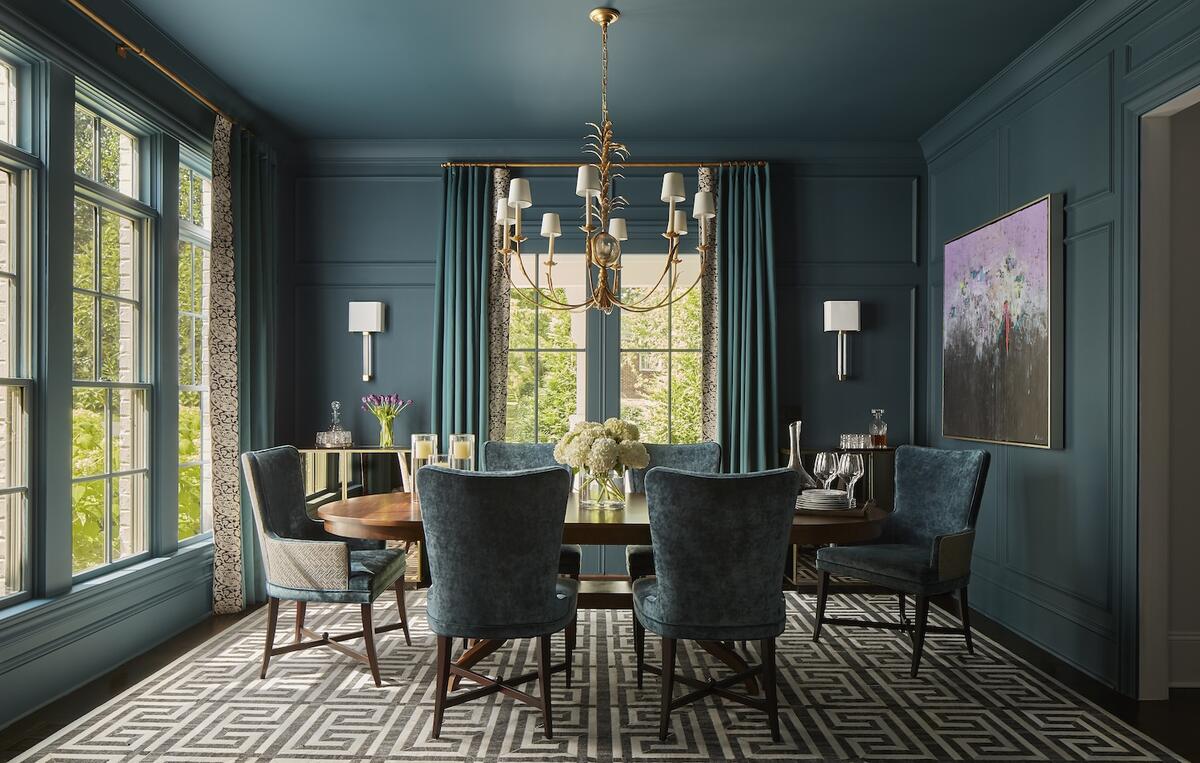
You said your design career started as an opportunity. What set you on this path?
In 2008, I was going to build a house. Now, I ended up not building it because of the downturn in the market. But in order to spec everything for the builder and to get budgets for the build, I had done hand-drawn elevation drawings of the kitchen and bathroom, and we were trying to do floating stairs. I ended up meeting my [now] former boss at a party, and he was like, “You should come in and show me your plans, and I’ll see if I can help you with your project.” So I went in on a Saturday and rolled out our architectural plans and all of my drawings, and he was like, “Oh, you have a really good sense for space and elevation.” We had about a three-month conversation, and then I came on board at his firm as a project manager. I did some hand drawings for him—we weren’t doing a ton on the computer yet—and I learned the business by setting up for his design meetings, cleaning up after them, and keeping records of all the materials and selections. I just absorbed and learned. We had a show on HGTV when I was there, too, so it was a wild ride for five years.
What made you realize it was time to move on?
I learned a ton, but it also was a toxic environment. So I actually launched my business not because I had a passion to be an entrepreneur but because I needed a healthier working environment. I was only five years in and just starting to kind of put my toe in the water of doing design on my own, and I didn’t think another firm would hire me without a degree, so I took the risk to build something [myself].
As much as I had learned at the previous firm, we weren’t really given the opportunity to practice being a lead designer on a project—we did a lot of pre-planning for design meetings, and then the principal took it and ran with it—so I didn’t have a lot of muscle memory for what it’s like to come up with the design, present the design and execute the design. I was definitely nervous about whether I could even do this business when I started. But within the first year of flexing those muscles and seeing projects come together, I was able to see my natural abilities starting to flourish.
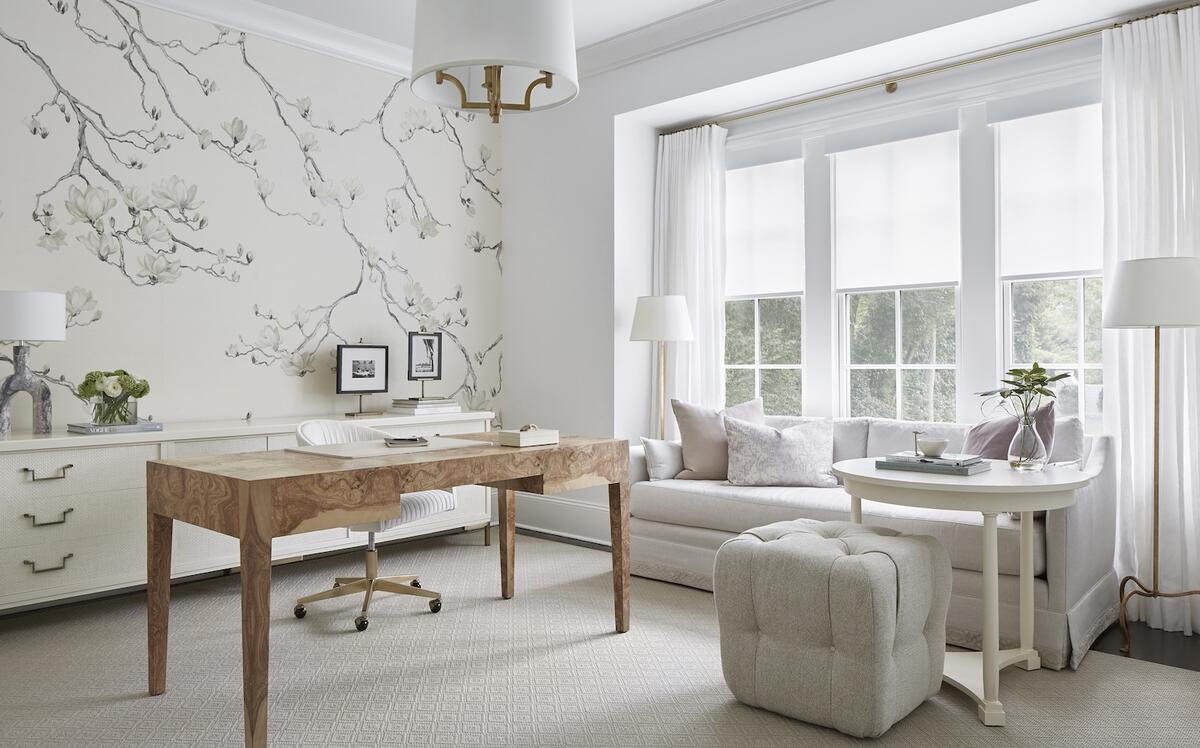
Did your experience at the firm give you the tools to build a design business that worked?
I had at least enough experience to see what worked and what didn’t work. The other thing is I had a lot of relationships with reps. When they would come in, my boss either didn’t have time to see them or didn’t want to, so he made us do it. That ended up being a huge blessing, because when I launched my own thing, I called on a lot of those reps and said, “I’m starting something new, but I don’t necessarily have a $10,000 buy-in.” And they would be like, “Oh, whatever we can do to help you; we believe in you. We’ll help you get things set up.”
That’s a huge advantage—having access to great accounts from the start.
It was. One thing I changed right away was billing for product. At the previous design firm, they did a retail markup. When [my boss] would estimate pieces or a space, the all-in cost was what you saw—his markup was all behind the scenes. So if you want this chair for $1,000 or $1,500, you don’t know I’m buying it for $500. On average, it was a 2.2 markup. And the whole time, I hated it. When we had clients walking through, I was turning my pages over so they didn’t see what I was buying things for. I also saw that as you’d get a year into a project with somebody, they’re spending hundreds of thousands of dollars, and then they’d be like, “Wait, how much money are you making on this?”
There were no design fees with that model, I’m guessing—just the markup?
Correct. It’s the old model of doing things. And you’d see some situations where, let’s say, somebody had a death in the family, so they decided to pause or scrap an entire project—then you literally made no money [even though you’d done the design work]. I didn’t want that either. Now, there was also a retail store attached, so there were different avenues of sales and money coming in—and that 2.2 markup is way more even today than my markup over wholesale, so he was making a lot more on every project, which I guess funds some of the losses. But I’d rather know what goals I’m working for, so the most important thing that I did when I started was establish a cost-plus [model] that was as transparent as possible.
What does that look like?
We bill hourly for actual time, then we do a cost-plus markup, and my client sees what I buy it for plus my markup. That way, we can log right in to a website during design meetings and see the net cost of an item. And I don’t get pushback from clients who are like, “Well, now that I see it’s only $500—” They know exactly what my markup is, and I remind them that the same piece retails for triple that cost, so they’re still buying it for significantly less through me. And I just like operating in that space of complete transparency.
I hear that we’re a little higher than others in the industry—our markup is 40 percent over wholesale. But I don’t think that every designer has worked as hard to get true wholesale accounts. When I’m ordering from many lines, I’m dividing by three. So when I’m ordering at one-third of the retail price, and then I’m only putting 40 percent back on top of that [price], clients are still paying less than half of retail. We have made sure that we have the buying power to make that make sense. And then if we find one-of-a-kind pieces from a vendor where I get 20 percent off, I reduce my margin, because I don’t want a client to pay more than what they could get it for themselves. The same is true when we do entire lighting packages for builds and remodels—we do the cost-plus at 20 percent, because I really want to be able to control the whole lighting package, get it within their budget, warehouse it, and deliver it with bulbs. At 20 percent, I can tell people, “You can’t get this kind of price point at a lighting store.”
You mentioned working hard to get good pricing for your vendors. How does that shape the way you source?
I feel like we’ve got a broad list of vendors that we buy from. Even internally, I never want to feel like, “Oh, I really want to do this, but I need to meet a minimum with this company, so I’m going to alter the design for that.” But [the profit] is definitely from selling product. I mean, that is what makes us a successful business.
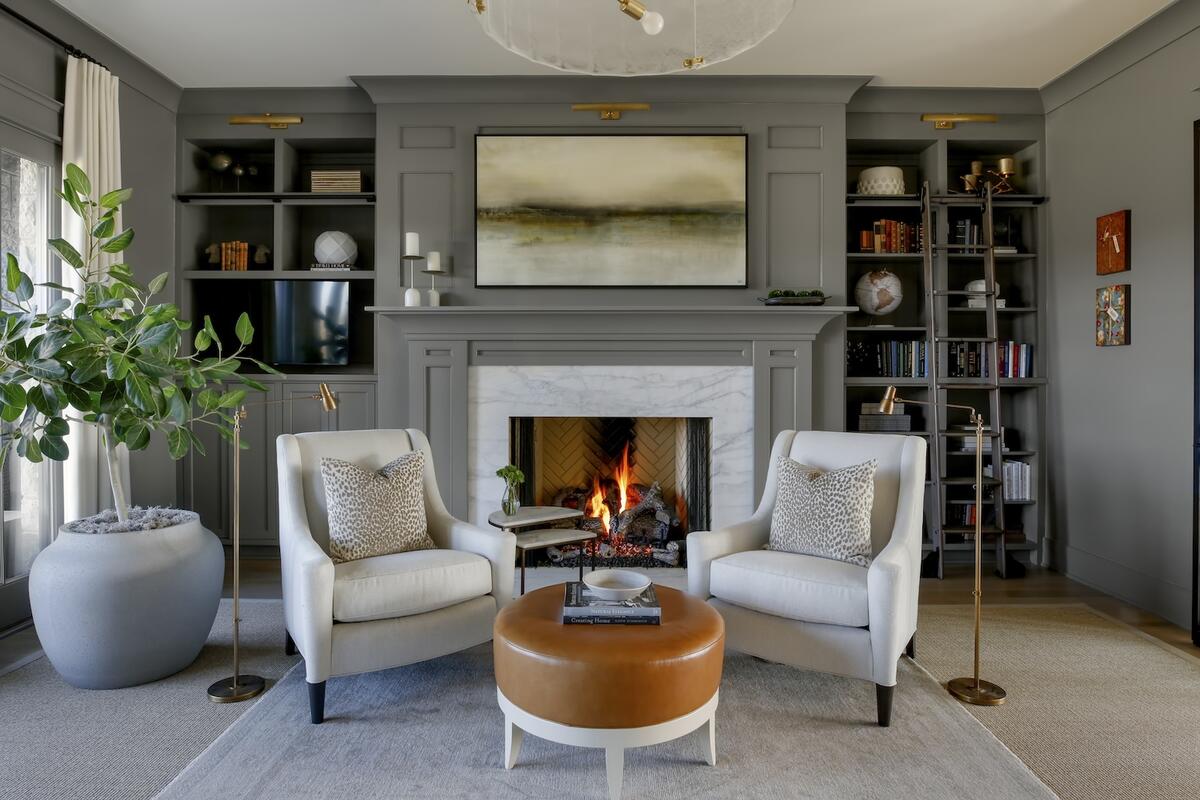
What does a full plate look like for your firm today?
We’ve shifted over the last two years—that’s when I decided that would intentionally take fewer jobs but bigger jobs. It’s actually been a bit of a roller coaster. We’ve got so much growth in Nashville, and [we’ve been able to prioritize projects] where we’re coming in at the architectural phase and being on the job for two years or so to do the whole build process and then furnishing. It’s a wonderful experience. And it’s profitable—but because I’m not taking as many jobs and spinning as many wheels in between, what I’m realizing is that we have really high highs and really low lows.
When there are delays in a construction, and we’re storing things for four more months than we anticipated while waiting for a project to finish—and we’re waiting for our final profit on the back end of it—it dips into our reserves, and then we right the ship once we finish the project. I thought we were going to be able to thoughtfully take jobs that would spread out over the year, where we’d have signed agreements with people in order to have several projects at different phases. But then something delays a project, or a project is no longer happening, and suddenly my beautiful model of spreading out the work is actually a couple projects crammed on top of each other and then a lull. It’s been interesting to try and navigate that.
As a rule, though, is having fewer but bigger projects more successful for you?
Yes—and creatively, it’s been so much better. Because of the time and attention that we can put into doing tile layouts and cabinetry elevations, and really combing through an architectural plan and putting great thought into the interior architecture and design, I feel like we’re doing much better projects. We’re not flying through something to get to furnishing it. I feel cohesion from start to finish on everything that we’re doing, and it’s coming together as a really beautiful, connected home. I’d rather do our business that way—you know, with the understanding that you also have to run a business.
It’s three of us full-time. I have a studio manager who runs logistics—orders and tracks everything, sets the schedule and oversees conversations with our billing manager—and then I have a design associate who does all of my CAD drawings, takes notes at client meetings and makes sure that we stay on top of deliverables when we said we would. Right now, we have 12 projects, including some that just need little final touches and some that are just getting started. Most are full-on builds, and then a couple of them are previous clients who come back to us and say, “Hey, I want my guest room updated.” Even though that falls below the minimum that we would consider for a new project, we’ll do anything once you’re in the family and we have that relationship established.
How do you decide what you say yes to?
It has been a lesson in following my gut during that initial interview process. These days, the first interaction is with the studio manager. She gets a sense of what they’re looking for, how demanding they are, or how excited they are to work with us beyond the minimum budget. Based on that conversation, she’ll set up a meeting with me for anyone who feels like a good potential client, and then I do a complimentary one-hour meeting to feel it out. I want to know what they liked in the work they’ve seen us do and what brought them to us. If I know in the meeting, I’ll go ahead and say, “Well, if you want to work with us, I’d love to.” But I’ll also often say, “I’ll have my studio manager send over our design agreement, and then we can circle back if it feels like a good fit for all parties,” which gives us a chance to talk about it in the office—to really make sure that we’ve had enough checks and balances along the way, so that once we start the project, it feels like everyone is totally on board for what it looks like.
To be honest, we get people who get kind of difficult if they can’t get on the phone with me immediately, or if we don’t act as if we’re ready to take their project right away. That is probably somebody we’re not going to move forward with.
When you bring it back to the team, how much is that a group decision?
It falls on me to make the final decision, but we definitely look at what we’ve recently agreed to and what type of time frame is being asked of us, and try to set an intention that we all feel comfortable with. There are other times when I’ll go ahead and plug something in because I know we need it for our bottom line.
What we often do is set a start date that’s three months out. I like to tell people, “When I start your project, I want you to be able to access me. I don’t want to plug you into the middle of stuff we’re currently working on, where we can only get you in for a meeting every three weeks.” You just can’t push a project along that way. I explain: “Ideally, we would get started in March. We’re finishing up these other things, and then I can give you my full attention. You’re going to get a better design, and we’re going to move the project forward a whole lot more efficiently if we can start then.”
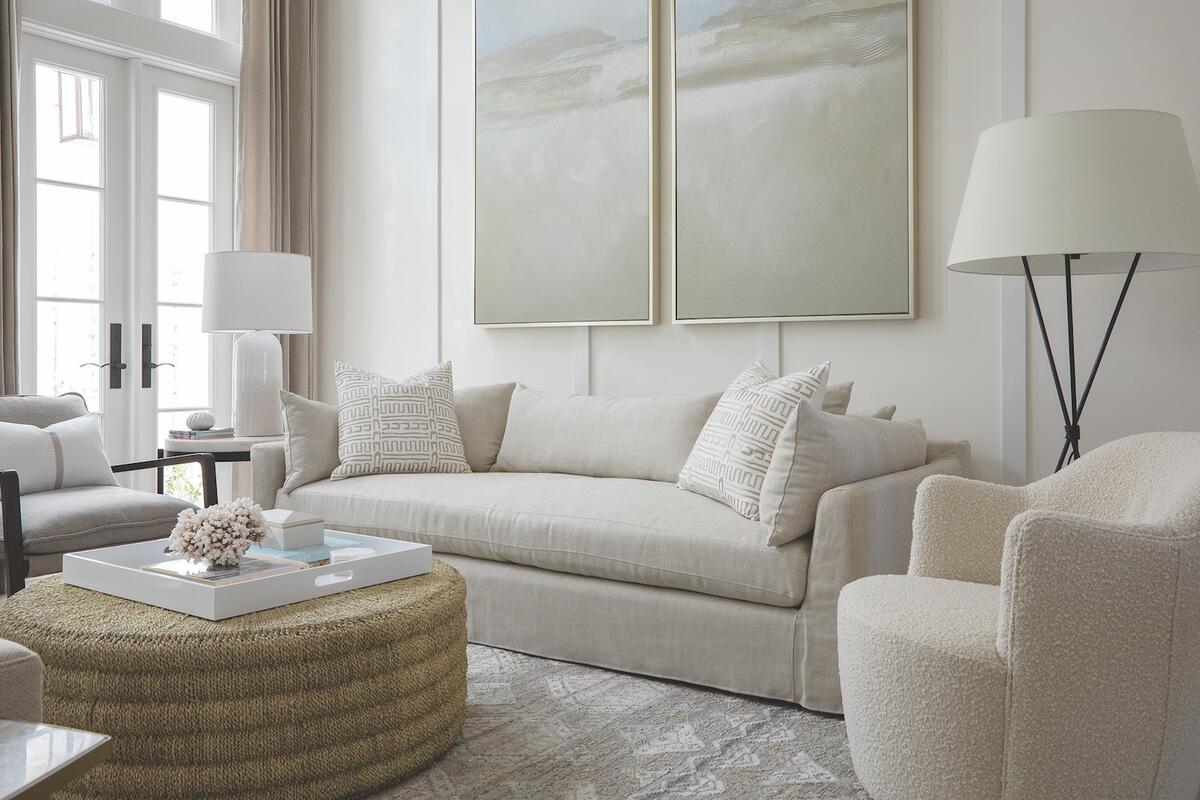
How did you approach the team-building process?
Well, I started in a little home office in my basement, and I was the designer, the billing manager and the delivery company. I had accessories on bookshelves in the garage. I hired my first studio manager about a year and a half in, which was a scary process: I was going from only having to meet my overhead to having to think about paying for me and another person.
But I also recognized that I could take on more jobs and be more efficient if I had somebody handling client interactions, tracking furniture and dealing with damages. And so I ended up hiring a studio manager who had been a stay-at-home mom and wanted to get back in the workplace. It was the perfect partnership—for me, taking a risk with my business; for her, feeling like she wasn’t going to get a chance in the corporate world after being out of the workforce for so long. I said, “Hey, if you’re organized and you show up on time and you’re easy to work with, I think we can make this work.” And it was an amazing experience for both of us. She cleaned up a lot of my processes, because now it wasn’t just me fumbling through papers to make sure I had everything organized. She put systems together so that when we get this information, it goes into this folder, and then this goes in the next—and all of that was huge for me.
Eventually, she did step into the corporate world, and I was so proud of her for finding a lot of success beyond me. And as scary as it was to replace my first employee, [it was a lot easier because] we had processes in place. Those systems have since been improved, and they’ve gotten more digital. But investing in somebody and them really absorbing what we do and figuring out a way to be more efficient was such a wonderful process for me.
I also ended up needing some design assistance. My first part-time hire was someone who used to work with me at my previous design firm. I knew she was a safe choice because I had a familiarity with her and she knew the world of design. Then I hired my first design associate, and now I’ve got an associate we hired right out of school. It’s been a journey of finding the people who piece together to make a strong team.
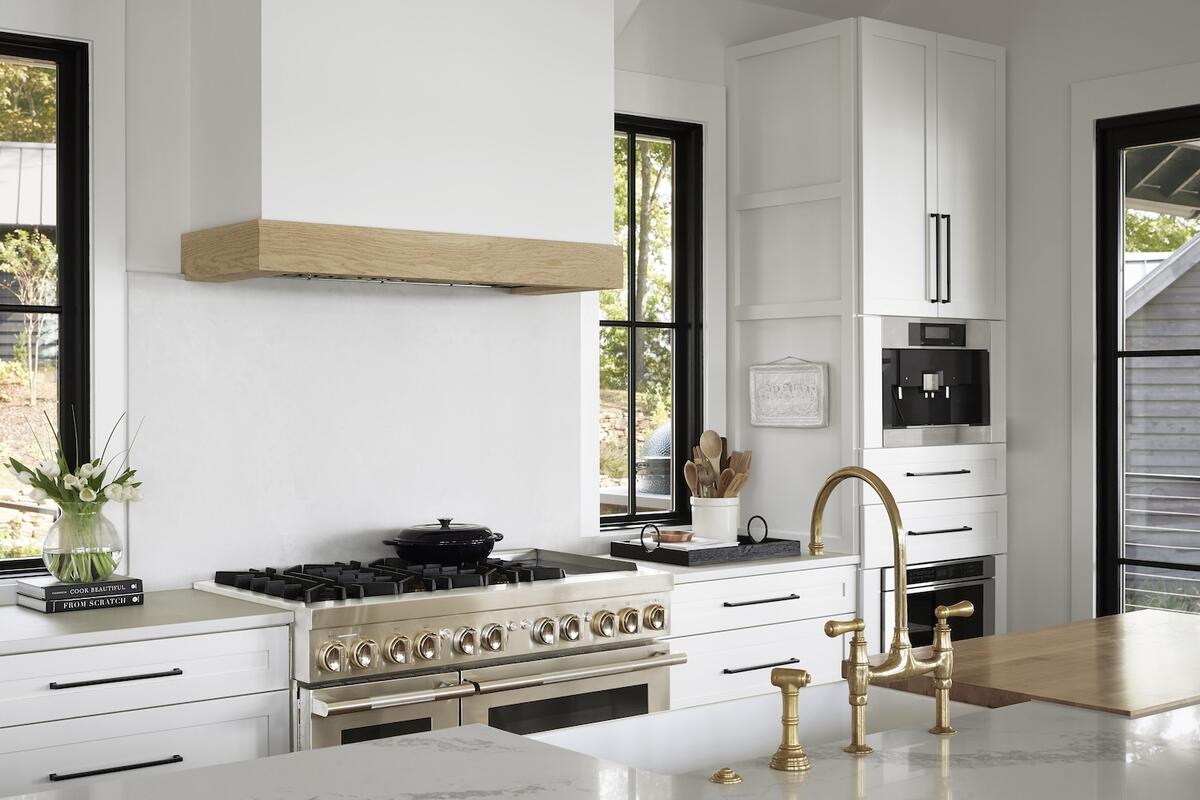
Your previous experience at a design firm didn’t have a positive working environment. How did that shape the way you lead your team?
I try to lead with kindness, and I look for team members who treat people the same way. They’re kind to our clients and vendors. And that [attitude] just builds an office rapport. We close early on Fridays to have a happy hour together, where we have a drink and just chit-chat about what’s going on in each other’s lives. It gives us an opportunity to be more than just co-workers who come in and get right to the grind.
I’m also trying to build something where every single decision doesn’t have to run through me. The studio manager has been with me for six years, so there’s a lot of stuff that she just handles. She may inform me of what has been going on, but she doesn’t have to look to me and say, “Hey, is that OK?” When we hired our current design associate, I had her start the interview process—and even once we made the hire, she started the training. We’re all perfectionists in this world, but I’ve just had to let go a little bit at a time. And my experience is that typically, when you let people who are invested in your business carry their weight, it’s better for everybody.
There were several years where I felt like my studio manager and I carried the weight of the office as multiple people came and went in that design associate position. There were a lot of dropped balls that got picked up by the two of us—we were never truly in a place where everyone handled their piece of the pie well. And so we were very intentional when we went through the interview process this time. Now we have somebody in that role who is efficient, does all the elevation drawings, handles the construction details and communicates with vendors. And for the first time, we feel like we’re churning like a well-oiled machine. We still all have ways we can do things better, but I’m happy to be in a position where all three of us are focused on what we’re doing, and it doesn’t feel like there’s anybody lagging behind.
The other thing I would add is that we moved our design studio into a commercial space five years ago, and it’s been a game changer. It is a storefront location, though we don’t have a store. Moving out of my home and finding a new work-life balance—and also moving into a space where we have all of our resources at our fingertips—just changes things. I feel like when we bring in potential clients and they see our space, it is a reflection of the level of design that they’re getting. When one of my best clients walked in for the first time, she goes, “Oh, my gosh, you’re legit.” This is someone I had done multiple projects with—weren’t we legit before, when we did homes for you? But it definitely makes you feel like you’re walking into a firm that’s well set up. It’s been well worth the investment.
How has your role evolved?
It’s interesting, because I see some of my design friends who have built firms so that they can eventually start stepping back. But I don’t see that being where we go, because I love doing design. I don’t love just being a business owner and building something that makes money—I like being in all the details and being a part of the entire process. And so for me, what is more likely is that my design associate would become a junior designer, and eventually a senior designer, and we would grow kind of underneath. Maybe we bring in another assistant to help across the board. But we’re not trying to build a huge firm with individual designers doing their own thing under a name. I don’t see us getting huge, and I don’t want the pressure of having to manage a bunch of people. But I am willing to stay whatever size allows us to be successful and, obviously, grow my staff financially. As long as we’re keeping up with that, I’m happy.
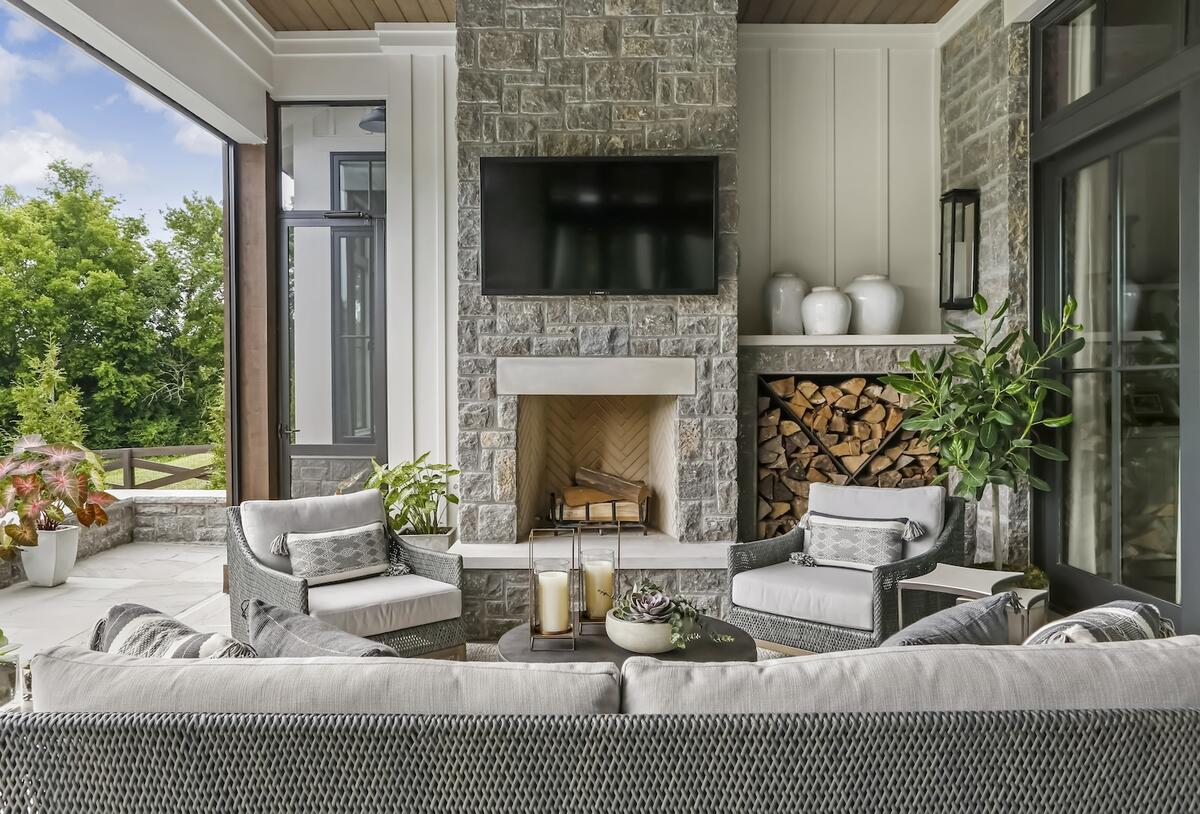
What is it like to be at the epicenter of this crazy real estate and design boom in Nashville, and how has that changed what’s happening in your business?
Well, what it’s done for my business is keep us busy. Nobody is fighting for clients, because it seems like there are enough of them out there for all of us. And honestly, this boom in Nashville has probably been going on for at least eight years. I’ve been very blessed to have the first 10 years of my business be in that boom, so it’s not like I’ve ever had to try hard to find clients. What I experienced is that when you do a good job, you’re efficient, you’re talented at what you do, and you’re kind, the referral business just keeps coming in. And enough people in the city are building new homes, or gutting and remodeling homes, that that referral business has kept us going for a long time.
What’s interesting is that because we’ve got people coming from California or Chicago or New York, they bring something different with them. People moving here seem to want the stereotypical modern farmhouse look—they think, “Oh, I want to move to a warm Southern city and have that.” And the people who live here seem to be like, “I don’t want that look. I want something else.” It’s funny to me that our design has not been affected as much by new styles coming into the city, because the people who are coming out of bigger cities are wanting that “home is where the heart is” Tennessee Christmas. I will do any design based on the client’s tastes, but we’re always trying to educate them along the way. Like, “I know that this looks like Nashville, but this particular style is kind of tired. Let’s push you into something that’s going to last you the next 10 years.”
Do you see the market slowing?
Because we have moved toward investing in long-term projects, I haven’t experienced a slowdown in any way. But if I was still existing [in a model] where I need 22 jobs going at the same time, I might be like, “Oh, well, we only have 14; we need to get some more.”
You had that early experience on camera with the HGTV show. Do you feel a pull toward that for your business now?
I can tell you a resounding no. I would never put us through what it takes to have a TV show.
When I was with my previous firm, we had a 13-episode season on HGTV. That entailed six months of filming, where I worked my regular job Monday through Thursday, and then we filmed Friday, Saturday and Sunday. It was a grueling schedule because we didn’t have the type of business where the filming could be our only job—we didn’t have a staff of designers back at the office doing the work while the leads could go be on camera—so we had to do the work for our regular clients to make money, and then film on the weekend. It was a lot.
After that, we had the opportunity to do a couple Property Brothers episodes where we were behind the scenes doing design, and I also would never do that again. They were fun experiences, but the amount of uncertainty about who is going to donate items, or who will allow things to go on approval for a camera shoot—or you come back and find out people are like, “No, I don’t want to do that,” and now the design is off. You’re borrowing things that you would never actually put in a project and figuring out a way to make it all work. All of that was so stressful for me. We had times where, two days before the reveal, I didn’t know where the furniture was coming from.
TV is its own beast. If I wanted to be known as a personality, that would be more of a drive. But I don’t even do little video clips giving design pointers on our Instagram. I just want to do really good design and work with great clients. Fame or being on TV is not something I’m looking for.
When we first onboarded with our PR firm, they were constantly giving me opportunities to do this, that or the other. On one of our monthly calls with them, I finally said, “I don’t want to be pitched any more opportunities for a video for how to update your curb appeal,” for example, because it just doesn’t feel true to me or the way that I do design. We build houses and furnish them, and we have landscape architects who deal with the curb appeal. They immediately got it and were on board. For me, it’s more about quiet professionalism than being a big personality.
What does success mean to you?
When I started my business, I had some other co-workers who had gone out on their own and immediately had huge success—like, their first project went direct to print in a magazine. And I had to figure out, “OK, I’m not having that type of success. Am I OK with that? What do I need to feel like I am happy with where my career is going?”
I had to take a step back and define success for me—and that is continued referrals for great projects. We do really good work, and I love linking arms with the clients we get, walking them through their project, and leading them to a successful finish. I am not interested in being a trendsetter or a tastemaker; I get to learn new styles, and I get to discover the individual tastes of people. My passion is the people I work with and getting them to a home that feels like them. If I can do that my whole career, that feels like success to me.
To learn more about Brad Ramsey, visit his website or find him on Instagram.





























